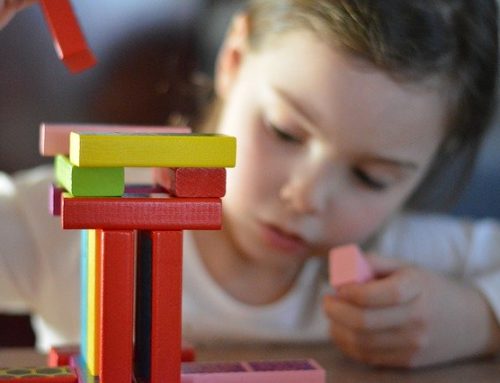 Sensory Processing Disorder (SPD) refers to a condition in which sensory inputs are processed incorrectly by the brain, which can lead to inappropriate behavioral responses to certain stimuli. If not attended to properly, SPD can eventually result in compromised neurological development. While this sounds simple enough on the surface, what we refer to as SPD can potentially involve so many overlapping factors within and without the brain, the body, the family, the community and/or the environment, that despite having a prevalence among American children as high as 15% by some estimates, it remains a vastly underrecognized and inadequately understood phenomenon on its own terms. That said, there has been a great deal of progress made toward untangling the many figurative knots presented by SPD over the last several decades, and while there is still a long way to go towards understanding it fully, the potential benefit of acknowledging its particularities for children, their families, and our society as a whole is incalculable. As such we hope to use the research currently available to shed some light on SPD and its effect on childhood development as well as some of the many and varied methods for treating it in order to help children grow to their full potential.
Sensory Processing Disorder (SPD) refers to a condition in which sensory inputs are processed incorrectly by the brain, which can lead to inappropriate behavioral responses to certain stimuli. If not attended to properly, SPD can eventually result in compromised neurological development. While this sounds simple enough on the surface, what we refer to as SPD can potentially involve so many overlapping factors within and without the brain, the body, the family, the community and/or the environment, that despite having a prevalence among American children as high as 15% by some estimates, it remains a vastly underrecognized and inadequately understood phenomenon on its own terms. That said, there has been a great deal of progress made toward untangling the many figurative knots presented by SPD over the last several decades, and while there is still a long way to go towards understanding it fully, the potential benefit of acknowledging its particularities for children, their families, and our society as a whole is incalculable. As such we hope to use the research currently available to shed some light on SPD and its effect on childhood development as well as some of the many and varied methods for treating it in order to help children grow to their full potential.
A Neurological Perspective of SPD
In order to properly understand SPD, we must first familiarize ourselves with the neurological process known as “sensory integration,” whereby information taken in through the senses (visual, auditory, proprioceptive, etc) is translated into electrical signals that the brain can interpret and direct to its relevant internal structures for processing.
The Process
This process has been modeled a number of different ways, but our purposes we’ll stick with the one proposed by Del Moral Orro in 2013, which consists of 4 phases: registration (the brain receives sensory information from sense organs); modulation (allows the regulation of stimulus intensity); discrimination (the stimulus is organized and interpreted to distinguish its relevance, characteristics and specific qualities) and response (the brain integrates all the processed stimuli to generate an appropriate response that will lead to a particular behavior and movements). Within the framework, SPD can be imagined as any of these processes being altered in an individual brain to the point that a given sensory input leads to an inappropriate or maladaptive behavioral response. So for example, if an individual’s sense of physical pressure on their skin is being improperly modulated by the brain, it may feel to the person like they need touch to be forceful in order for them to recognize it; thus if at any moment their mind craves stimulation by physical touch, they may respond to that craving by clapping their hands loudly. The fact that SPD can operate on any of the above mentioned points on the sensory integration continuum, as well as any of the intersections between them (or between sensory integration and any other relevant neural process) makes it prone to being mistaken for other similarly-presenting conditions, and in any case can be difficult to target effectively with treatment even when properly recognized.
SPD and Other Disorders
With all this in mind, it’s easy to see how these kinds of issues often manifest in children: problems with attention and focus in class, inordinate effort towards pursuing or rejecting particular stimuli, associated problems with internal regulation, to name just a few examples. It bears mentioning here that SPD is closely associated with conditions such as ADHD and Autism spectrum disorder, the latter having a co-morbidity rate with SPD estimated as highly as 92%. Regardless of the correlation, research has shown consistently that when left untreated SPD in children leads to higher rates of anxiety, depression, low self-esteem and motivation, and even psychopathy, any of which will continue to deepen after the child reaches adulthood. As harrowing a picture of reality as all this information in aggregate presents, there’s some hope to be found in the fact that despite popular perceptions of such conditions being mostly congenital, the research actually shows that experiential and environmental factors in the life of the child and their mother have a much more direct connection with SPD; and if this doesn’t sound like good news to you, keep in mind that we have many resources available to us to tailor the experiences and environments of our children, and using these powers of our has already shown promising results in helping sufferers of SPD in its many forms manage their symptoms and optimize their potential.
How Can We Help?
At our clinic, we offer Dr. Alfred Tomatis’ Listening Training as one of these tools to help your child or yourself succeed in spite of issues caused by SPD. Combined with an individualized, patient-centric approach, the Tomatis method offers both targeted stimulation to improve the sensory integration capabilities of the brain and a nurturing, low-pressure environment to maximize the client’s receptivity to the training. To learn more about how listening training can help you or someone you know who suffers the negative effects of SPD, click here.




